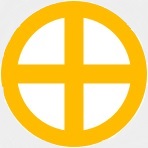AFV AFV021 German Sd. Kfz. 141 PzKpfw III Ausf. G Medium Tank - "White 223", 13.Panzer Division, Ukraine, July 1941 (1:43 Scale)
"We must do everything we can to promote anti-tank defense, and work just as hard to guarantee successful counter-attacks through the instrument of powerful tank forces of our own."
- Major-General Heinz Guderian, "Achtung Panzer!"
 As early as 1934/35, General Heinz Guderian envisioned two basic types of armor to act as the lead elements of the future German Panzer Divisions. The first vehicle was to be armed with an anti-tank gun and two machine guns while the second one was to be a support vehicle, armed with a larger caliber gun. The first one eventually became known as the Panzerkampfwagen III, which was to be a standard tank for the three light companies of a tank battalion. The second vehicle became known as Panzerkampfwagen IV.
As early as 1934/35, General Heinz Guderian envisioned two basic types of armor to act as the lead elements of the future German Panzer Divisions. The first vehicle was to be armed with an anti-tank gun and two machine guns while the second one was to be a support vehicle, armed with a larger caliber gun. The first one eventually became known as the Panzerkampfwagen III, which was to be a standard tank for the three light companies of a tank battalion. The second vehicle became known as Panzerkampfwagen IV.
In 1935, development orders for a 15-ton fully-tracked vehicle based on the specifications set down by the Waffenamt (the Ordnance Department) were issued to MAN (Nurnberg), Daimler-Benz AG (Berlin-Marienfelde), Rheinmetall-Borsig (Berlin) and Krupp AG (Essen). In order to maintain secrecy, the new vehicle was known as the
Zugfuhrerwagen (ZW) - platoon commander's vehicle. The vehicle was designated Versuchkraftfahrzeug 619, Mittlerer Traktor (Medium Tractor) and 3.7cm Geschutz-Panzerwagen.
The Panzerkampfwagen III's development arose from a conflict between the Waffenamt and the Inspector for Mechanized Troops over the vehicle's main armament. The Waffenamt selected and was satisfied with 37mm gun, while the Inspector for Mechanized Troops demanded a larger 50mm gun. In the end, the 37mm gun was chosen as the main armament for the new vehicle. The decision was based on the fact that the infantry was already equipped with the standard 37mm Pak 35/36 L/45 anti-tank gun, so only one gun and one type of ammunition needed to be produced. The turret and turret ring was still capable of mounting a heavier gun originally envisaged by the Inspector for Mechanized Troops. Armored protection was to be heavier in the front of the vehicle than the rear, since the new vehicle was to be used in forward elements of the assault tank formations. The top speed was specified to be 40km/h. and the vehicle was to be operated by a crew of five men, with a commander, gunner and loader in the turret and driver and radio operator in the forward part of the hull. Communication between crewmembers was handled through the use of an intercom system, the first German tank to be equipped with such a device. Later on, all of the Panzers were equipped with this system which proved to be very effective during combat.
Pictured here is a German Sd. Kfz. 141 PzKpfw III Ausf. G medium tank that was attached to the 13.Panzer Division, then deployed to Ukraine during July 1941. Now in stock!
Dimensions:
Length: 5-inches
Width: 3-inches
Release Date: August 2022
 Historical Account: "Unlucky in Love" - The 13th Motorized Infantry Division participated in the invasion of Poland, as part of the southern thrust, and the Battle of France, advancing through Belgium towards Calais and on to Lyon.
Historical Account: "Unlucky in Love" - The 13th Motorized Infantry Division participated in the invasion of Poland, as part of the southern thrust, and the Battle of France, advancing through Belgium towards Calais and on to Lyon.
The 13.Panzer Division was formed in Vienna in October 1940 from the 13th Motorized Infantry Division and was immediately sent to Romania but was not part of the Balkan campaign. It served in Operation Barbarossa as part of Panzer Group 1 (Army Group South), and it contributed to the successful encirclements of the Soviet forces at Kiev. At the end of 1941, it was positioned at Rostov; however, it was forced to retreat due to fierce Soviet counter-attacks.
In 1942 and 1943, the division formed part of the First Panzer Army (Army Group A); it was involved in the battles for the Caucasus oil fields and at the Kuban Peninsula after the Battle of Stalingrad. In the fall of 1943, it was withdrawn to Western Ukraine, where it fought defensive battles near the river Dniepr.
The offensive of the Soviet Army pushed the Germans to their starting positions of June 1941. The 13th Panzer Division was attached to Army Group South Ukraine, which had orders to stop the Soviets from capturing the Romanian oil fields. The division was reformed in July and it received modern equipment, including the Panther G tank and the Jagdpanzer IV. The Red Army offensive of August 1944 resulted in the deaths or imprisonment of most of the division.
In the Battle of Debrecen, the division helped to annihilate three Soviet corps; however, it was encircled in Budapest at the end of 1944 and destroyed in January 1945.
In the spring of 1945, the division was reformed under the name Feldherrnhalle 2. The last engagements with the Soviets were fought on the Austro-Hungarian border. The division surrendered in Austria in May 1945.


